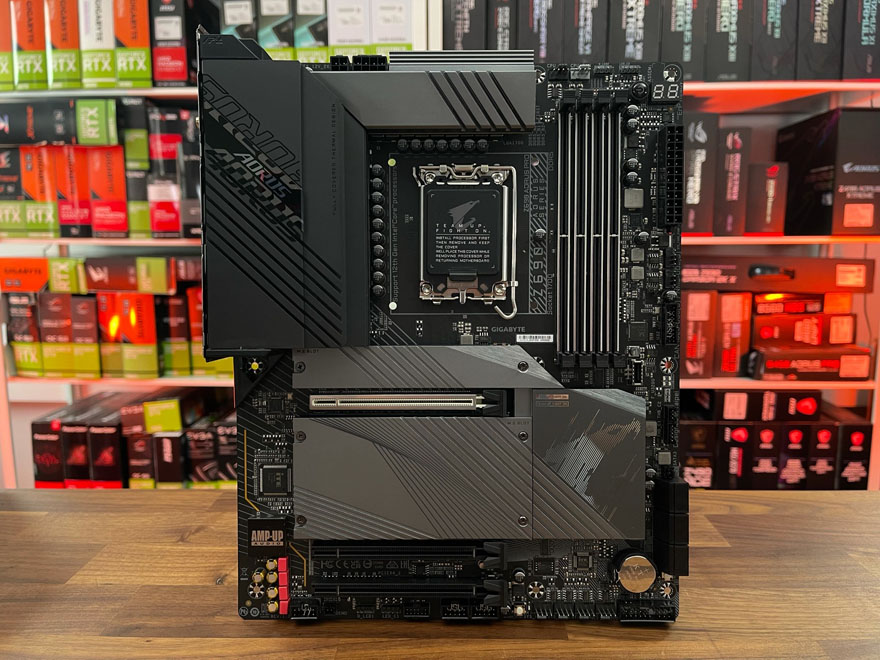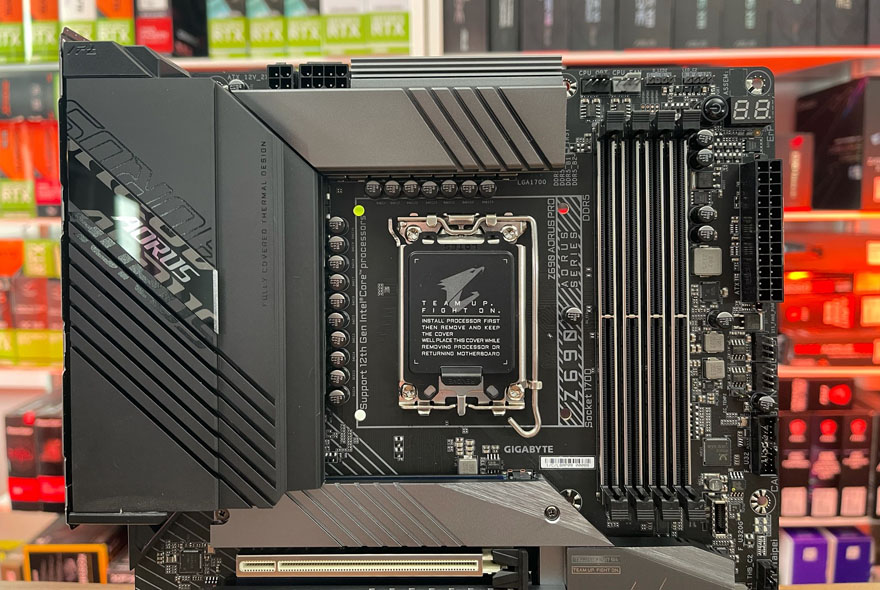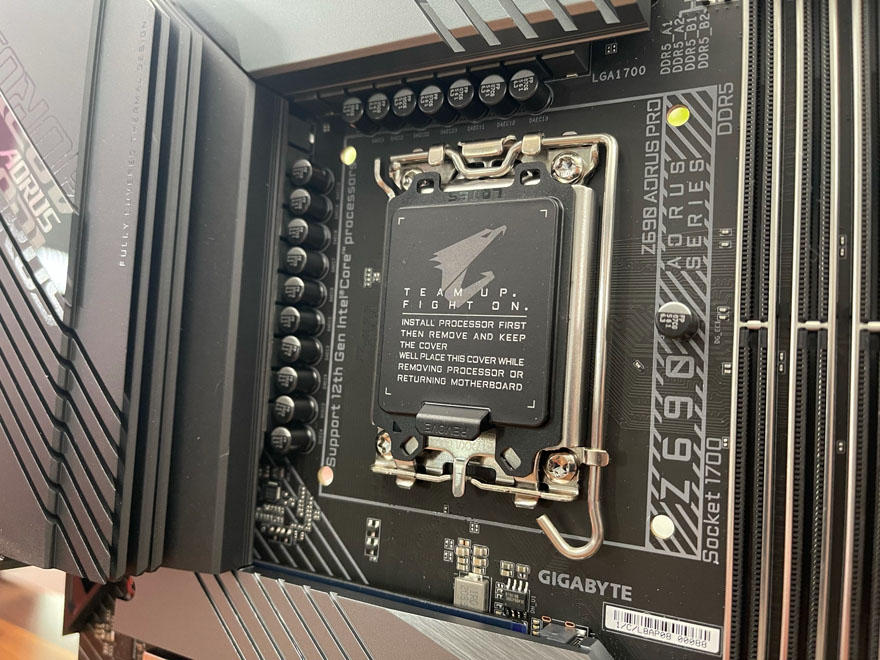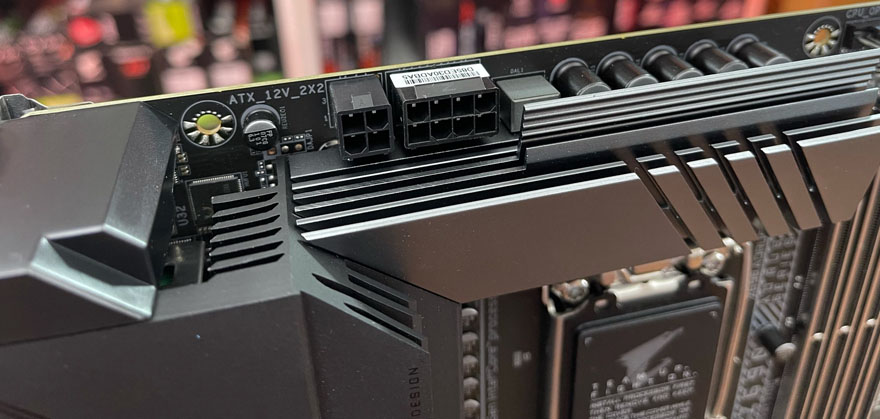Gigabyte Z690 AORUS Pro Motherboard Preview
Peter Donnell / 3 years ago
Motherboard Overview
First impressions go a long way, and the Z690 AORUS Pro makes a great one! It’s a very attractive looking board, and while it doesn’t have as much armour as the XTREME, it’s hardly lacking in raw materials. For starters, there’s an absolutely massive heatsink combo surrounding the VRM, with a large block at the top, and a larger one extended over the rear I/O on the left.

All that metal work isn’t being wasted either, as it’s cooling the Direct Digital VRM hardware. This comes with 16 VCORE Phases, 1 VCCGT Phase, and 2 VCCAUX Phases, which run through the 90A Power Stage and Tantalum Polymer Capacitors.

Obviously, this board has the new LGA1700 socket, but keep in mind, this isn’t backwards compatible with the last-gen, but if you’re an Intel fan, that’s hardly going to surprise you.

The CPU pulls power from a 4+8 pin PSU header combo, adding a little extra power for improved stability while overclocking.

The lower heatsinks are pretty robust, with two screws securing the top M.2 heatsink, and the larger section below that with four screws. Remove them, and you’ll find room for a couple of M.2 drives. What appeals to me the most, however, is that PCIe 5.0 slot, which comes with a nice armoured design. There’s a couple of PCIe 3.0 slots further down too, should you need them.

The AORUS PRO deploys four DDR5 slots, with support for XMP 3.0 memory at DDR5 4800 – 5600. Tucked into the top right corner, you’ll also find a master power control, and a handy BIOS LED.

There are six SATA3 ports, and a few USB headers too, so overall connectivity is pretty decent, and there’s a good range of storage options.

The rear I/O is nicely laid out, with four USB 3.2 ports right along the top. There are four USB 2.0 ports below that in a 2+2 layout, and then four more USB 3.2 ports and a USB 3.2 Type-C near the bottom, giving you great options for systems with a lot of peripherals. There’s both 2.5 GbE LAN and WiFi 6 too, ensuring you can always get connected. Interestingly, the board streamlines the 3.5mm audio options with a single Line-Out and a single Mic-in. However, there’s an SPDIF should you need it too.




















